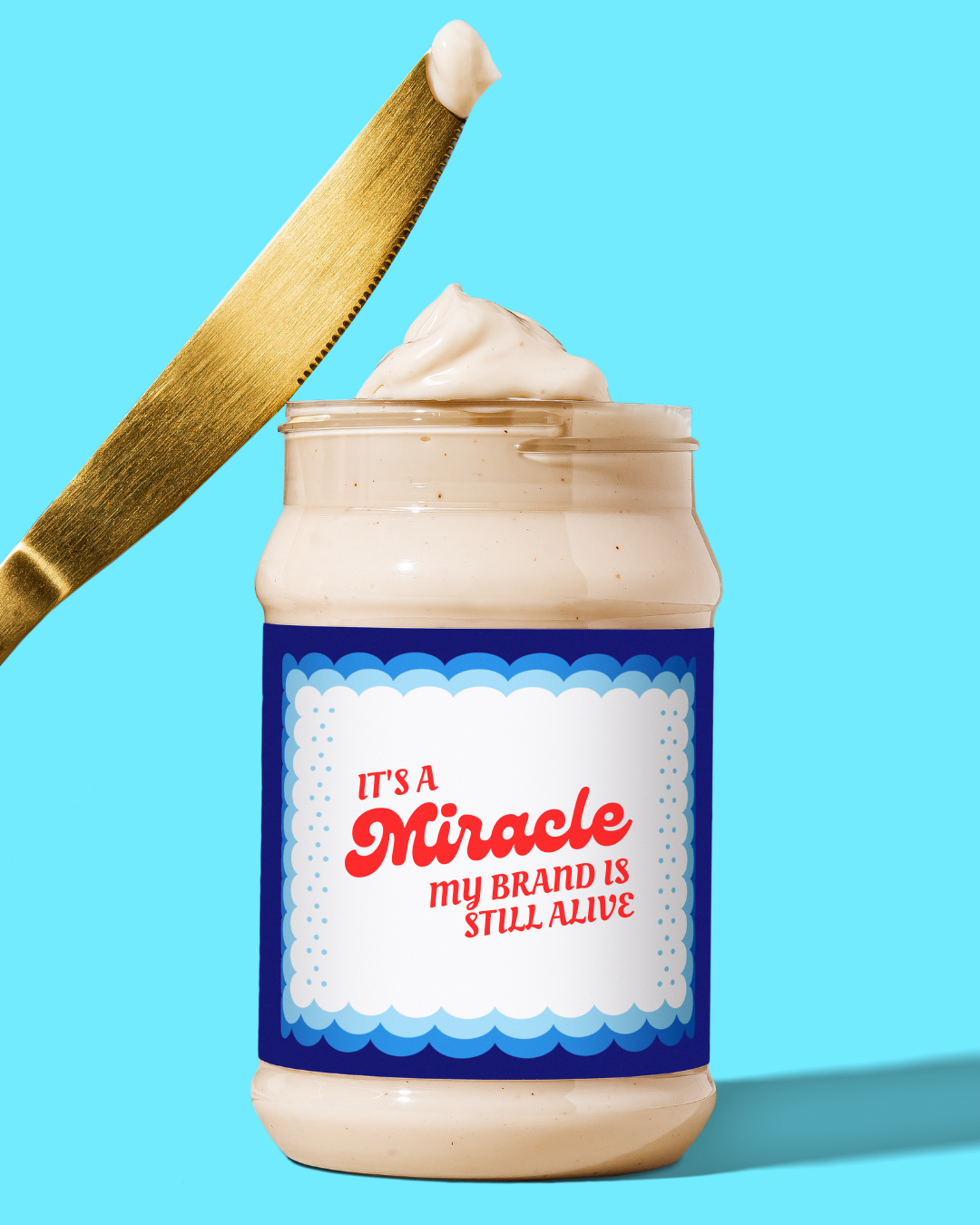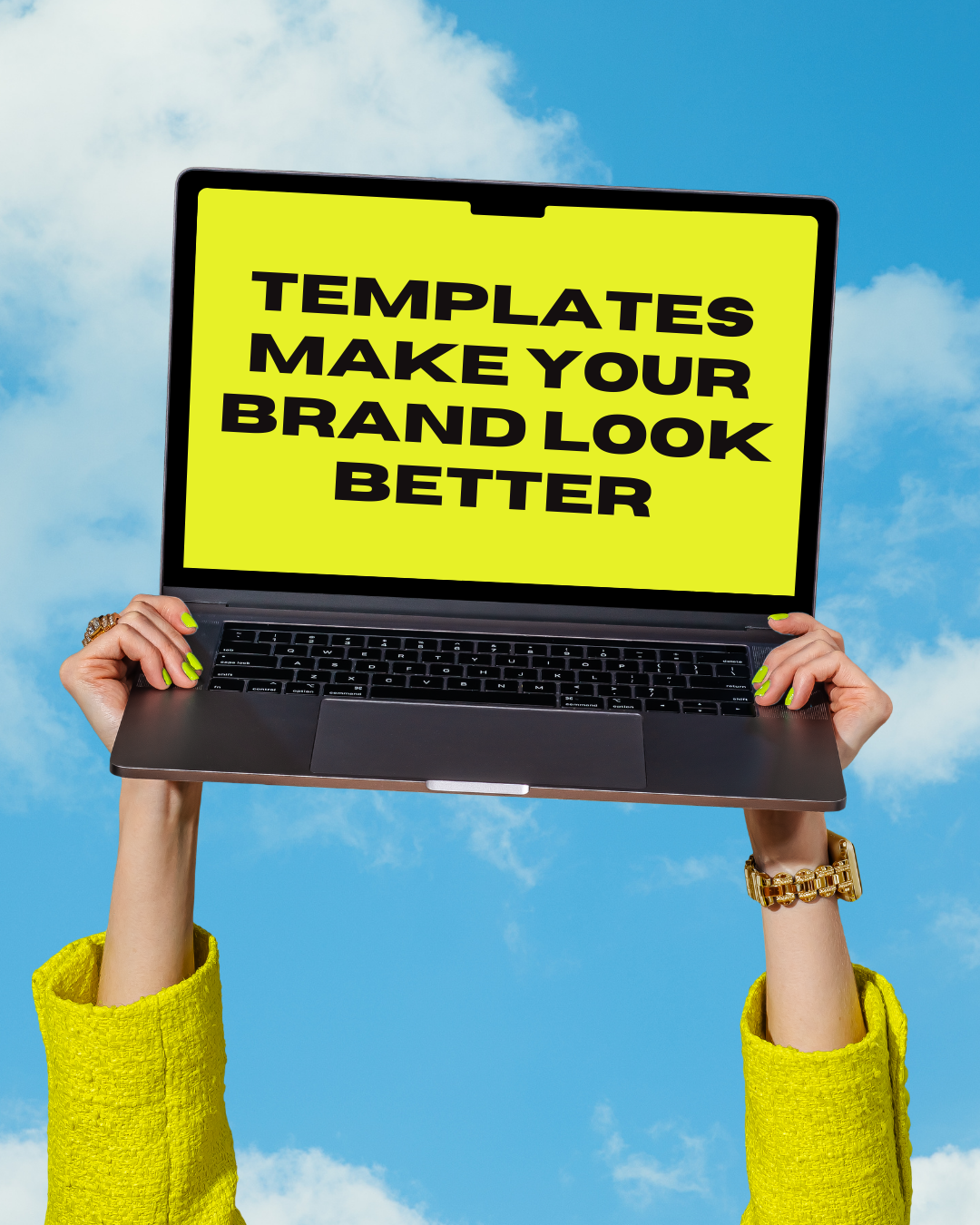10 Common Branding Mistakes and How to Avoid Them
You hear it all the time: “Building a brand is essential to your growth and visibility.”
Yes-sireeee, it is! But if you don’t specialize in branding, how can you know what mistakes you’re making? Put on your snorkle and dive in to a world full of answers, my friend.
Mistake #1: Inconsistency
Your brand needs consistency in various forms, and there’s an easy way to remember it by the 3 V’s:
Voice
Voyage
Visuals
Let’s breakdown what that means.
Voice is your way of speaking. But to determine how your brand speaks, you have to also know how your audience speaks.
For example, let’s say you’re a candle company that appeals to older woman.
Do you think some copy with the tone of, “here’s a hint: your room smells like sh*t.” would attract them?
While that might be more enticing copy for teenage boys, your older women crowd probably won’t resonate with that tone. Therefore, don’t speak that way!
Aren’t sure what your brand is saying? Luckily, I created this nifty little cheat sheet to help you out!
Voyage is your mission. What does your brand stand for? How does it show up everyday? How will it evolve over time?
Your brand has a reason for its existence, and everything about your brand must stick to this reason.
Let’s say your brand sells cleaning products and your mission is “clean without the chemicals.”
Why without the chemicals?
Because they can contaminate our water systems, they’re not healthy to breathe in, they’re damaging to delicate surfaces, it’s better for the environment, etc…
Think of the whys of your mission and consistently stick to those values in all your marketing messages.
Visuals are how you represent your brand through your colors, photography, and design.
In general, your brand should have a palette of 4–5 colors that work in harmony. Don’t stray from these!
If Coca-Cola suddenly changed all their signature red cans to purple cans, there would be an uproar! Unless you’re going through a re-brand, stick to your colors. They help reinforce brand recognition too, since 85% of buyers claim color as a reason for buying products.
You should always have a brand guide that you can reference to keep your brand consistent.
The same goes for your photography and design. There’s many styles you can go for—but pick one that works best for your brand and stay with those visual choices.
Which leads me to…
Mistake #2: Crap visuals
Okay, that sounded a little harsh. But that’s because your visuals are quite important as they can increase conversions by up to 80%!
A lot of new businesses simply cannot afford to hire a professional photographer. So when you’re first starting out, utilize professional templates that you can customize to your brand.
Mistake #3: Ignoring the customer experience
You have your beautiful visuals and brand identity—hooray! But, did you come up with a plan for your customer experience?
Ask yourself questions like:
How will people get a hold of me with questions/problems?
How quick is response times?
How will I solve their problems?
For example, you could choose email support over a live chat. You could communicate that it will take you 2 business days, or that you’re instantly available via chat. You could also provide them with a discount or store credit as a solution.
These are all important questions and topics that you want to have answers for ahead of time. That way, whenever an issue arises, you’ll know exactly what to do and the customer will know what to expect.
Whatever you do… make sure you stick to your promises!
Mistake #4: Mimicking competitors
The first thing many brands will do is look at their competitor and try to replicate their success.
I love research, so I couldn’t possibly deter you from doing the same.
However! When it comes to your branding, do not do exactly as your competitor does.
You won’t be able to differentiate yourself (which is exactly what a brand is supposed to do).
You can gain valuable insight and see the approach they’re taking for their brand—but think deep.
Why does this work for them?
How can I take this information and make it work in a way that is authentic to my brand?
Instead of mimicking your competitors, do some deep research and find ways to contrast them.
Mistake #5: Relying on trends
Trends are one of those beautifully distracting things. Yeah, they’re fun to look at, and could provide you with some lovely inspiration… but is a trend what you want to build your brand upon?
You want to create a brand that will last, not one that is fleeting.
If you see a trend that you like, find the individual elements that comprise it, and use a fresh way to integrate it into your brand.
I know that sounds like a lot of blah blah blah, so let me give you an example.
Let’s say you own a hip ice cream company and you like the latest trend, which is inspired by 80’s pixel art. You know, like the original Super Mario Bros!
Instead of copying that exact style and colors for your brand, you could translate that feeling into a few custom pixel-art icons of flavors: orange, banana, strawberry, etc.
You can put them on your menu, sprinkle them in social media posts, or use even them for your next ad campaign.
You’re taking a trend, transforming it, and making it uniquely yours.
But remember, it has to make sense with your brand from the get-go.
Don’t rely on trends, but use them as a starting point. Think of something that will last for years to come, not what’s hot this month.
Mistake #6: Poor design
Did you know that 94% of consumers will leave a website if it has a poor graphic design?
And that doesn’t just apply to websites. More than likely, if your website has poor design, your other marketing elements do, too!
But there is some good news—there’s so many affordable resources available to help your brand look more professional.
You could utilize memberships with professionally designed templates, customizable photography, or revamp your color scheme!
Once your budget allows, you can hire a designer on a monthly retainer to keep those marketing assets running smoothly and on-brand.
Mistake #7: Too many voices
Are you showing up everyday with the similar voice?
Take a look at your last few social media posts. Does it sound like it’s coming from the same person, or are you sensing dual personalities here?
Similar to Mistake #1, your voice needs to maintain the same tone for each of your marketing materials.
Are you having trouble staying consistent? The next time you’re creating content for your brand, use this checklist to ensure your brand is stayin’ steady!
Free Cheat Sheet: Is Your Brand Consistent? [Download Now]
Mistake #8: Not updating your brand
Look, people change… and brands do, too!
Remember when Dunkin’ used to be called Dunkin’ Donuts?
Dunkin’ dropped the Donuts part so they could expand their focus beyond donuts and to appeal to younger customers.
And this move made sense. Dunkin’ is so much more than just donuts, and their new name reflects their myriad of other offerings.
This update also helps keep their brand relevant to today. As brands age, so do their customer base… and if your aim is the capture the next generation, change is necessary.
Reflect on your brand and its trajectory every few years. Make changes as needed to help your brand progress, stay relevant, and avoid stagnation.
Mistake #9: Being too general
If you brought a random group of women into a conference room and tried to sell your power tools… how many do you think you’d sell?
Probably not much.
Like many women, I find power tools absolutely boring.
Now this time, you did your research and brought in men, aged 45–60, with interests in home improvement.
Do you think you’d have a better chance of selling your power tools?
You betcha.
Notice how defined the audience is in the second approach.
You may think by widening your audience pool, the greater chance you’ll have of selling your product or service. More eyes is more sales, right?
Wrong.
The truth is, you simply cannot speak to everyone. And there’s a couple reasons for this:
When you speak to everyone, you speak to no one—which means zero engagement (and purchases) from your audience.
You dilute the emotions of your brand, which is a suicide mission for your brand voice.
All of this leads to my next point…
Mistake #10: Not targeting the right audience
Let’s take our previous example of selling power tools.
You now know that you’re going to sell more to men, aged 45–60, with interests in home improvement.
That’s a great start!
But let’s make it even better.
Do some research and deep dive into your audiences—learn their interests, hobbies, where they shop, what they don’t like… etc.
And did you catch that I wrote “audiences”?
You more than likely will have multiple segments of audiences, and this is something that you’ll become more and more familiar with as your brand grows.
For example, one segment could be:
SEGMENT 1
Men, ages 45–60
Interested in home improvement, specifically deck building
Married
Lives in rural midwest
Afraid to spend too much on a new tool since the last one broke on him
SEGMENT 2
Men, ages 25–40
First time home-buyers
Lives in the suburbs
Goals include making a safe place to live and starting a family
The first segment targets your typical midwest dad (actually, I built that one with my dad in mind.)
But my dad used to be a 20-something-year-old too…
And that’s why the second segment focuses on younger men looking to start a family.
Each audience segment takes a unique approach to target different generations. We’re all at different stages in our lives, but that doesn’t mean the same brand and products can’t appeal to both of us.
Find the specific audiences that work best for your brand (2–3 is a great goal).
If you feel completely lost on where to start, you can always start with general audience targeting. The more you learn about your audience(s), the more you can define them (and this will help down the road with running ads or email campaigns). Here’s a great post that goes more into depth on that topic.
If you’re struggling with any of the above, try out this checklist to keep you on track any time you produce content. That way, you’ll know you’re never making these mistakes!
What mistakes are you making in your business? I’d love to know in the comments below!



![An image of a fancy gloved hand wearing a pink tweed jacket and an Apple Watch that says "no time for [poop emoji] visuals." Photography, design, and Canva template created by Shamblen Studios.](https://images.squarespace-cdn.com/content/v1/632ca5fa8c0b1313a3e52b4d/81d9192c-9238-4a72-8502-397eda8c2033/Shamblen+Studios+Template+-+Apple+Watch.png)



